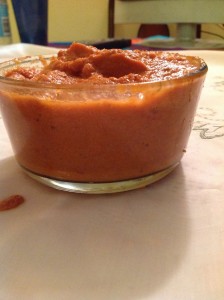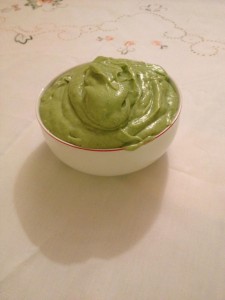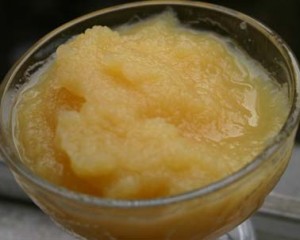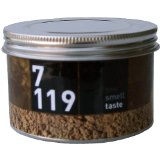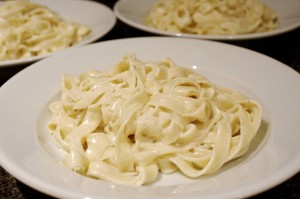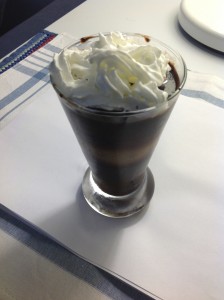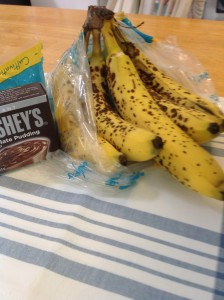
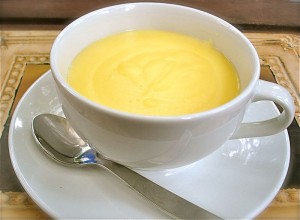 Take a look at the following definition of custard by Danilo Alaro at About.com Guide
Take a look at the following definition of custard by Danilo Alaro at About.com Guide
Definition: “Custard is a culinary preparation made by blending eggs with milk or cream. Custard is thickened by the coagulation of the egg proteins, which is achieved by gently heating the custard in some way.
Custard is mainly used as a dessert, or as a base for a dessert, or as a dessert sauce.
Custard can be cooked in a bain-marie in the oven, or on the stovetop. Cooking custard in a bain-marie helps keep the cooking air moist and heats gently so that the custard doesn’t curdle or crack.”
Now, let’s think…what’s the difference between the Spanish Flan and Custard, or, for that matter, Crème Brule? Well, Flans & Crème Brule recipes usually have cream instead of milk and may be sweeter. What distinguishes them is caramelized crust on the top. And a caramelized top would present risks for individuals with swallowing disorders because it is not soft and cohesive and may well break into pieces as it moves through the mouth. So we’re going to stick to the more ordinary custard. But what if you pine, absolutely pine for the Flan you remember from childhood? Can this custard be a Flan? Well, many Hispanic flans call for using evaporated milk, so you could substitute one cup of evaporated milk for one of the custard’s two cups of milk and it would be creamier and more like the one you pine for. It can also be flavored with a cinnamon stick while you’re boiling the milk combination.
I’m going to work on creating a soft caramel topping that would work with this flan/custard. Come to think of it, there’s a lot of thick sweet sauces that could be delicious on top of custard. Think custard pie without the crust. But for a quickie, buy a jar of butterscotch ice cream topping and thin it with brandy or bourbon or cream to a degree appropriate for your swallowing problem, then pour a bit into a bowl and then turn out the custard so that it sits on a pool of butterscotch topping.
Custard
2 cups milk
8 ounces eggs (4 large eggs)
½ cup sugar
1 teaspoon vanilla extract
¼ teaspoon salt
Preheat oven to 325 degrees F. Place 6 ramekins in a large ovenproof sauté pan or roasting pan and fill the pan so that the water comes ¾ of the way up. Remove ramekins.
Combine the ingredients and blend until mixture is uniform with a whisk, hand blender or a standing blender. Fill ramekins evenly, about 3 ounces each. Place in the water bath in the oven. Bake for 30 to 40 minutes, until the custard are almost set. Remove them to a rack to cool, then refrigerate until thoroughly chilled, several hours at least.
To serve, loosen the edges where the custard adheres to the ramekin with the tip of a knife and turn them out onto plates
Flan
(Adapted from Gran Cocina Latina by Maricel E. Presilla)
- 1 cup whole milk (or cream)
- 1 12-ounce can evaporated milk
- 1 teaspoons vanilla extract or vanilla bean
- 1 cinnamon stick
- 4 large egg yolks
- 4 large eggs
- 1 14-ounce can sweetened condensed milk
Place the whole milk or cream and evaporated milk in a 3-quart saucepan. Split the vanilla bean in half, scrape the seends into the pan, and add the bean or the vanilla extract. Add the cinnamon and barely bring to a boil over medium-high heat. Lower heat and simmer for about 5 minutes. Remove from heat and let it cool.
Whisk together the egg yolks, whole eggs and condensed milk in a large mixing bowl. Stir in the cooked mixture. Strain the mixture by pushing it through an extra-fine mesh sieve into a bowl. Put a 9-inch round cake pan to serve as a mold; set in a baking pan at least 3 inches deep. Pour the mixture into the mold, fill the baking pan with enough water to come half-way up the mold, then bake in a 350 degree oven for about an hour and 15 minutes. When done, the flan should feel wiggly, not dry or firm. Let cool to room temperature then refrigerate, covered with a plastic wrap, for at least 3 hours before unmolding.
 6 links of sweet Italian Sausage
6 links of sweet Italian Sausage